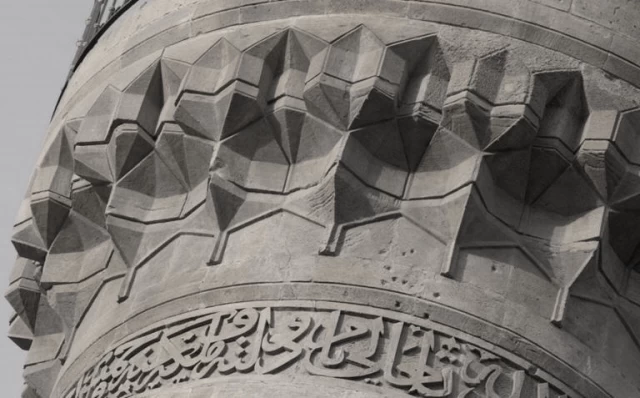In the first half of the 19th century, Tsarist Russia occupied the entire Caucasus. However, the tsarist policy of occupying the Caucasus did not end with the annexation of land and the abolition of local governance. Tsarism began to implement a policy of establishing its own rules, spreading Christianity, and limiting the important role of Islam in the region as much as possible. This policy was met with strong resistance throughout the Caucasus, and calls for jihad against Christian Russia began to be heard. The main force opposing the Russian occupation was the Muslim clergy, who constituted the educated and organized part of society. Uprisings occurred in most regions of Azerbaijan, including Lankaran, Shusha, Guba, and Sheki (Nukha), in protest against the Russian occupation and the violence carried out against the religion of Islam. For this reason, tsarism was forced to reckon with the power of the Muslim clergy, a special class that was an independent socio-political force with a significant influence on the moral issues and daily life of society, and had to make changes in its relationship and political approach toward them.
Tsarism began to implement its policy regarding Islam and the Muslim clergy with caution. The autocratic government sought to limit the sphere of influence of Islam, spread Christianity in Muslim-populated territories, neutralize the religious and political activities of the Muslim clergy by purposefully pressuring them, and benefit from their influence for the sake of the empire's interests by entering into cooperation with them. Therefore, tsarism was forced to reconcile with the influence of Islam and the Muslim clergy in the Caucasus and established the Transcaucasian Muslim Religious Board and the position of Sheikh-ul-Islam in 1823. Akhund Muhammad Ali Huseynzade of Tbilisi was appointed Sheikh-ul-Islam of the Caucasus. From that date on, all Sheikh-ul-Islams of the Caucasus were from Azerbaijan.
The Transcaucasian Muslim Religious Board included the Muslim population living in the territories of Northern Azerbaijan, Western Azerbaijan, Kars, Ardahan, Batumi, Krasnodar, Terek, and Georgia.
The Transcaucasian Muslim Religious Board did a great deal of work in a short time to meet the interests of the Muslim population. As soon as tsarism noticed this, in order to highlight sectarian differences in Islam, it established the position of Mufti of the Caucasus in the Board in 1832.
Thus, in the 1830s, two religious boards for Caucasus Muslims began operating in Tbilisi: the Shia religious board led by the Sheikh-ul-Islam and the Sunni religious board led by the Mufti. Each of the boards consisted of ten people. Each board was legally subordinate to four councils: the councils of Tbilisi, Iravan, Yelizavetpol (Ganja), and Baku. The Shia board had 20 qadis, and the Sunni board had 16 qadis.
During this period, the Sheikh-ul-Islam and the Mufti were appointed by the Tsar's Viceroy of the Caucasus, and the activities of the religious boards were directed by the tsarist government. They were considered a branch of the state administration, and the clergy were treated as equal to tsarist officials.
With the goal of directing Islamic ideology toward a beneficial path for the prosperity of the empire, tsarism announced a special statute on the administration of the Caucasus Shia and Sunni clergy. According to that statute, this included Sheikh-ul-Islams, qadis, and akhunds for the Shia, and muftis, imam-khatibs, and efendis for the Sunni, as well as ordinary mullahs, muezzins, various eulogists of the Islamic religion, seyyids, murshids, and others belonging to both traditions.
During the vice-regency of Tsar Alexander II's younger brother, Mikhail Nikolayevich Romanov (1862-1882), efforts to organize the institution of Muslim clergy in the South Caucasus were accelerated and finally found their resolution.
At the end of 1864, Sheikh-ul-Islam Akhund Ahmad Huseynzade and Mufti Mahammadzade were included in a special commission created under the chairmanship of Bulatov, the vice-director of the Main Administration. The draft prepared by the commission provided for the determination of the hierarchical structure of the Muslim clergy. Religious figures who would be represented in the religious boards were divided into ranks. The lowest rank included mosque mullahs whose duties were to perform religious ceremonies and provide education in mosque schools. The administration of the mosque clergy was entrusted to the district qadis, who were assigned to the second rank. The third rank was made up of circuit qadis. The highest religious rank was assigned to the Sheikh-ul-Islam for the Shia and the Mufti for the Sunni. They headed the religious boards. To exercise government control over the activities of the boards, a special oversight body with the status of a prosecutor's supervision was established.
It was envisioned that the clergy of the lower ranks would be elected, while those of the highest ranks would be appointed.
The Transcaucasian Muslim religious boards were organized with a Sheikh-ul-Islam for the Shia and a Mufti for the Sunni at their head. Both religious leaders were given the right to issue fatwas.
Finally, with the decree of Tsar Alexander II dated April 5, 1872, the "Regulations on the Muslim Religious Boards of the South Caucasus Shia and Sunni Denominations" were approved. Thus, two religious boards for Muslims were established in the South Caucasus: the Shia and Sunni Religious Boards. These regulations remained in force without significant changes until February 1917.
The tsarist government's activities towards organizing the Muslim clergy in Azerbaijan, which began in the late 1820s, found their logical conclusion only after 40 years.


